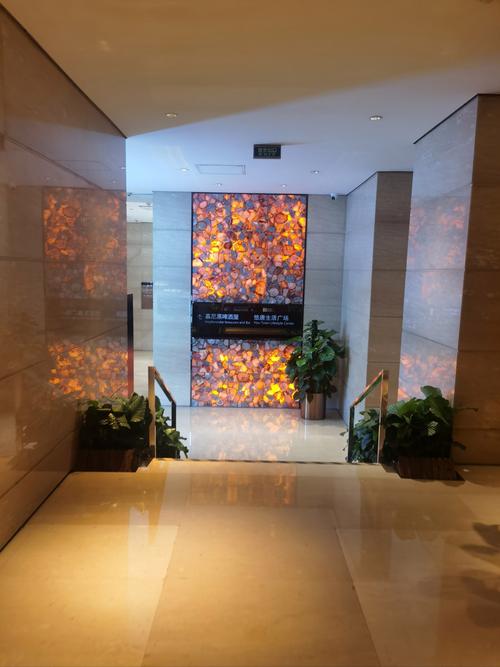北京朝阳皇冠假日酒店 综合介绍
北京朝阳皇冠假日酒店是位于北京核心商务区的一家国际五星级酒店,隶属于洲际酒店集团旗下的皇冠假日品牌,它以其优越的地理位置、专业的商务服务和舒适现代的设施,成为了众多商务旅客和休闲游客在北京的首选下榻之地。

(图片来源网络,侵删)
核心亮点速览
- 地理位置绝佳:紧邻北京东三环,国贸CBD核心区域,交通极为便利。
- 商务设施一流:拥有超过2,000平方米的灵活会议空间,是举办各类会议、宴会的理想场所。
- 客房舒适现代:客房宽敞明亮,设施齐全,注重细节,提供高品质的睡眠体验。
- 餐饮选择丰富:汇集了中、西式美食,特别是其自助餐在北京享有盛誉。
- 服务专业贴心:作为皇冠假日品牌,服务标准高,员工专业且乐于助人。
详细分项介绍
地理位置与交通
这是该酒店最大的优势之一。
- 地址:北京市朝阳区东三环中路丙2号
- 核心位置:
- 商务中心:紧邻国贸CBD,中国国际贸易中心、国贸商城、嘉里中心、京广中心等顶级写字楼环绕,步行即可到达。
- 交通便利:
- 地铁:步行约5-10分钟即可到达 地铁10号线 的 国贸站,可轻松换乘1号线、2号线,通达全城。
- 机场快轨:从国贸站可直达 首都机场T2/T3航站楼 和 大兴机场,非常方便。
- 出租车/网约车:位于东三环主路,出行极为方便,可快速前往三里屯、王府井、使馆区等地。
- 周边环境:酒店周边商业氛围浓厚,购物、餐饮、娱乐设施一应俱全。
客房与设施
- 客房类型:
- 酒店拥有 565间 客房和套房,面积从 42平方米 起跳,空间感十足。
- 房间设计现代简约,色调温暖舒适。
- 设施亮点:
- 智能控制:支持智能客控系统,可通过手机App或房内面板控制灯光、窗帘、空调等。
- 高品质床品:提供舒适的“皇冠假日之床”,配备高品质的床上用品,保证优质睡眠。
- 高速网络:提供免费的高速Wi-Fi。
- 齐全的商务设施:配备人体工学办公椅、大书桌和充足的电源插座。
- 人性化细节:配备品牌洗浴用品、独立浴缸和淋浴间、浴袍、拖鞋等。
- 特色房型:
- 皇冠行政楼层:位于高层,提供专属行政酒廊礼遇,包括每日早餐、下午茶、晚间欢乐时光(含酒水和小食)、快速入住/退房、免费洗衣服务等。
- 家庭房:特别适合家庭入住,空间布局合理。
餐饮选择
酒店内有多家餐厅和酒吧,能满足不同口味的需求。
- 彩食代自助餐厅:
- 招牌餐厅,是酒店的王牌,以高品质的自助餐闻名,尤其在周末和节假日非常火爆。
- 菜品:提供丰富的国际美食、中式热菜、海鲜刺身、烧烤、甜品等,食材新鲜,种类繁多,更新频率高。
- 皇冠轩中餐厅:
提供地道的粤菜和创意中式菜肴,环境雅致,适合商务宴请或家庭聚餐,包间私密性好。
- 大堂酒廊:
位于酒店大堂,是一个轻松舒适的社交空间,提供咖啡、茶、简餐和鸡尾酒,是商务会面或小憩的理想场所。
 (图片来源网络,侵删)
(图片来源网络,侵删) - 24小时客房送餐服务:为有需求的客人提供便利。
会议与宴会
酒店是北京CBD地区顶级的会议和宴会场地之一。
- 规模:拥有 2,000多平方米 的灵活会议空间。
- 设施:
- 一个 无柱式大宴会厅(面积超过800平方米),可容纳超过800人的晚宴或1200人的剧院式会议。
- 多个不同大小的多功能会议室。
- 服务:提供专业的会议策划、一站式服务、先进的视听设备和高速网络支持,确保各类活动圆满成功。
健康与休闲
- 健身中心:配备了先进的健身器材,包括有氧运动区和力量训练区。
- 室内恒温游泳池:25米长的标准泳池,全年开放,是放松身心的好去处。
- 水疗中心:提供专业的按摩和理疗服务,帮助客人缓解旅途疲劳。
目标客群
- 商务旅客:是酒店的核心客群,得益于其优越的地理位置和专业的商务服务,非常适合在国贸CBD工作的商务人士。
- 休闲旅客:对于希望在北京核心区域游览的游客来说,这里是绝佳的基地,交通方便,设施舒适。
- 会议及活动组织者:举办公司年会、行业峰会、产品发布会、婚礼等活动的首选场地。
优点与不足 (Pros & Cons)
优点:
- 地理位置无敌:位于CBD核心,交通和商务便利性无与伦比。
- 品质稳定:作为国际连锁品牌,服务和设施品质有保障,非常可靠。
- 餐饮出色:彩食代自助餐口碑极佳,是吸引回头客的重要因素。
- 客房舒适:空间大、床品好、智能化程度高,睡眠体验佳。
- 会议专业:会议设施完善,服务团队经验丰富。
不足:
- 价格偏高:作为五星级酒店,尤其是在CBD区域,价格不菲,尤其是在旺季。
- 人流密集:酒店大堂、餐厅和电梯在高峰时段会比较拥挤。
- 周边交通拥堵:虽然交通便利,但东三环本身是北京最拥堵的路段之一,自驾出行需考虑时间成本。
总结与预订建议
一句话总结: 北京朝阳皇冠假日酒店是一家位置绝佳、品质稳定、服务专业的商务型五星级酒店,是追求高效、舒适和便利的旅客在北京的“安全牌”和“放心之选”。
预订建议:
- 提前预订:特别是周末和节假日,以及大型会议期间,务必提前预订。
- 关注优惠:可以通过洲际酒店集团官方App、官网或第三方平台(如携程、飞猪)寻找会员优惠、套餐或特价房。
- 选择行政楼层:如果预算允许,选择皇冠行政楼层能获得远超房费价值的礼遇,性价比很高。
- 体验自助餐:如果入住,一定要去彩食代自助餐厅体验一次,尤其推荐周末的早午餐。

(图片来源网络,侵删)




